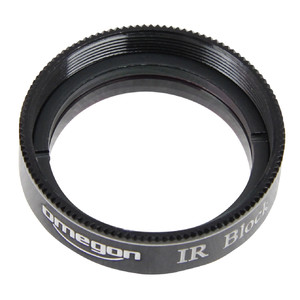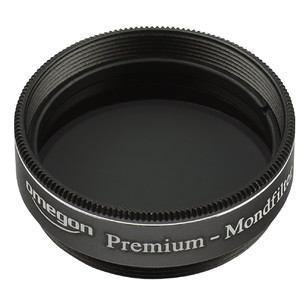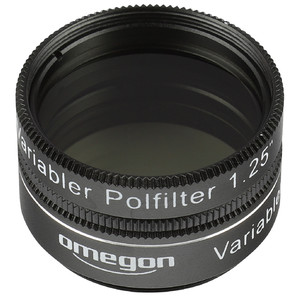Tyvärr har den här beskrivningen ännu inte översatts till svenska, så du hittar en engelsk artikelbeskrivning här.
Omegon 0.5X reducer - reduces the focal length for visual and photographic use
This reducer halves the focal length of your telescope, giving you a much wider field of view. You can use this, for example, for doing astrophotography using an astronomy webcam.
Screw it in and you're ready to go
Using the reducer is ingeniously simple - it is threaded for attaching to a 1.25" filter thread, which lets you easily screw it into any 1.25" eyepiece or 1.25" camera adapter.
The simple way to increase your webcam's field of view
Screw the Omegon reducer into the filter thread on your camera and so double the size of the photographic image field. This lets you take images of much larger areas of the lunar surface, for example. The reducer is also great for taking videos of the Moon using your webcam. You can obtain even larger image fields with your astronomy webcam if you attach an extension tube (e.g. 25mm) between the reducer and camera.
The advantages in a nutshell:
- 0.5X reducer for screwing into the filter thread
- expands the image field of your webcam
- more light intensity
- can be used visually with an eyepiece
- also optimal for video astronomy
- take images of larger areas of the Moon's surface
- Technical Specifications:
- mounting threads - 1.25" filter thread (28.5x0.75 M) on both sides
- free light transmission - 22.5mm lens aperture
- 2 lenses for better correction - cemented together and coated
- black anodized aluminium housing
- reduction factor of about 0.5X, depending on spacing
- 85mm focal length
Vår expertkommentar:
Tyvärr har den här beskrivningen ännu inte översatts till svenska, så du hittar en engelsk artikelbeskrivning här.
The reducer is useful for 0.25 to 0.5 inch chips (webcams, DMK, Watec) and focal ratios from f8 (refractors, Maksutov and SCs). It needs about 5cm of back focus. The result an f4 to f6 optical system. The reducing effect can varied by using the distance from the chip, e.g. by filter rings.
The reducer is unsuitable for DSLRs and large CCD cameras as the chips are not completely illuminated.
(Bernd Gährken)






